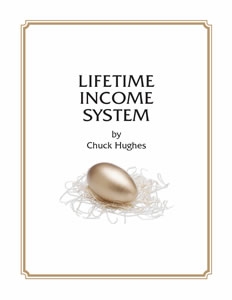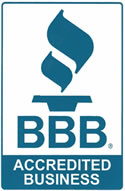.jpg)
Follow
Us:    
|
Learn How to Succeed
with Passive Income Trading
Original Turtle Trader
Shares His Trader Expertise
When: March 17-19, 2017
Where: LAX Embassy Suites, Los Angeles, CA
Who: Russell Sands - One of the Original Turtle Traders
You’re invited to the Final Turtle Tour with Russell Sands! You will not only be able to meet the original Turtle Trader, but learn from the original methodology.
Russell Sands will be providing his personal trading tips to you, as well as the methodology behind the Turtle System on both Saturday and Sunday.
This is more than just a seminar...
Don’t miss this event!
Click Here to Register
Many believe the Turtle trading program started by Richard Dennis is, by any measure, one of the greatest success stories in the entire history of trading!
Here is your final chance to gain access to it!
Find out how to get your $500 discounted seat: Click Here Now

|
|
Chuck Hughes, who started his trading in 1984, was a full-time commercial airline pilot. However, according to Hughes, his job as pilot was quite frustrating sometimes. This is the reason that he wanted to start his own trading. His working schedule of 15 to 17 days off each month used to create a void and trading was the perfect solution for this. Hughes got quick success in trading as he finished 10th in the '85 United States Trading Championship and 3rd in '86 competition with a huge 260% return.
Chuck Hughes also accrued titles in the systems trading in another international trading championship in futures in '94 and '95, the day trading division of '95, and the professional division in '99. In 2003, Chuck Hughes was placed third in the in the same competition for Stock Trading. Then in 2005, 2007 and 2009 he took first once again in the stock trading division.
 |
Over $1,090 Profits Per Minute!
($10,905 in 10 Minutes!)

That’s five minutes to enter the trade, five minutes to exit. Ten total minutes to complete the Costco trade that will earn a minimum of 1,090.5% — maybe more.
Best of all, this was NOT a one-time event. That same week, it happened again. This time our little group had the opportunity to make $28,546.00 — a staggering $2,854 per minute!
To put this into perspective...
Had you been among this small group of ordinary individuals, and assuming you invested just $5,000 on each of these three dates... following my exact instructions... You would’ve pocketed a grand total of $170,750 in just 30 days!
Learn More About
Chuck Hughes'
Lifetime Income System
|
|

Better
Business Bureau
 |
|
Click on authors name
to learn more
|
| |
|
|
Chuck Hughes provides the featured article this week discussing how to time low risk entry points with Keltner channels.
Then, Lee Gettess sheds some light on what he expects from the market in his video newsletter Lee Gettess’ Market Sense.
Jea Yu pens the next segment about how the market’s trading environment is a primary element to success.
Last, Chris Verhaegh offers his PULSE Options Weekly Newsletter.
Enjoy!
Adrienne LaVigne
TradeWins Publishing
 |
|
Keltner Channels: Timing Our Entry
by
Chuck Hughes
The following
is an excerpt from Chuck Hughes' Lifetime Income System
I use a simple but powerful trend following system I call PowerTrend that tells us if we should be buying or selling stocks. The concept behind trend following is very simple. When the trend is up, we buy stocks. When the trend is down, we sell stocks.
When the price of a stock on the last trading day of the month closes above the 10-Month Simple Moving Average (SMA), the stock is on a PowerTrend ‘buy’ signal. We can either buy the stock that day or use the Keltner Channels to help us time a low risk entry. This allows me to purchase a stock after a PowerTrend buy signal.
The Keltner Channels function as an overbought/oversold indicator. The goal is to purchase a stock that is on a PowerTrend buy signal, but is temporarily oversold. This helps me to enter a stock after it has already moved up in price with a low risk entry.
Overbought is a term used to describe a stock that has been increasing in price over a period of weeks or months with very few price pullbacks. Oversold is a term used to describe a stock that has been decreasing in price over a period of weeks or months with very few price increases.
Stocks on a PowerTrend buy signal do not advance in a straight line. There are always price corrections or retrenchments along the way. Much like the tide, there is an ebb and flow in the price movement in stocks. This is the natural order of the markets... stocks advance and then the price declines inevitably as profit taking occurs.
Stocks can remain on a PowerTrend buy signal as these price declines occur as long as the price decline is not severe enough to cause the 1-Month price to close below the 10-Month SMA, which indicates a reversal to a sell signal.
The Keltner Channels are a valuable timing tool, as the channels can help us prevent buying stocks when they are in an overbought condition. When stocks become overbought they are vulnerable to profit taking and minor price declines within the context of remaining on a PowerTrend buy signal.
Keltner Channels: Timing Our Entry
|
Lee
Gettess' Market Sense
by Lee Gettess
Lee
Gettess is a top trader who is excited
to bring you his video newsletter.
Each week, Lee will share his predictions
on what he anticipates from the bond
and S&P markets.
Watch
Video
|
Trading Environments
by Jea Yu
The following
is an excerpt from Jea Yu's Trading Full Circle
If one understands simple cause and effect, the goal is to avoid the cause. If you know that driving into a bad neighborhood at night might lead to getting car jacked, what do you do? You avoid going into that neighborhood at night. You keep going straight and don’t take a detour. Sounds simple right? It should be, but sometimes it’s not.
The market’s trading environment is a primary element to success. This refutes the old beliefs that trading method and management alone are the keys to success. I have seen weak traders make more money in a fertile environment than strong traders in an infertile environment. When I refer to a fertile or infertile environment, I am not referring to an up or down market. I am referring to the trading environment.
A fertile environment has follow-through, liquidity, stock and sector synergy, momentum, and most importantly, an effective foreshadowing element. An infertile environment is the opposite. It is choppy, usually flat, and illiquid. A fertile environment can turn infertile in minutes. Luckily, when there is the most chaos and panic is when a fertile environment is created. This is usually found in the pre-market and the first hour of the market open. Once things settle down, the fertility is usually the first to go, as everyone is trying to leapfrog each other using every edge, resulting in coin-toss setups.
Oscillation players may win for a while as the breakout players get chopped. Once the oscillation players let their guards down, they take the average ordinary looking wiggle and jam it into an extended squeeze, sucking in breakout players and squeezing out the oscillation players. Once the breakout players are comfortable, they pull a continuation to suck back in the oscillation players, and so forth.
Understand that a 50/50 chance is called a gamble. Even 60/40 chances are considered gambler’s odds. Speculation usually requires 80/20 chances of success. This is what differentiates an infertile environment from a fertile environment – the inclusion of a foreshadowing setup.
Trading Environments
|
PULSE Options Weekly Newsletter
by Chris Verhaegh
The following is an excerpt from Chris Verhaegh's PULSE Options Weekly Newsletter
Every week Chris publishes his “PULSE Options Weekly Newsletter”. The following is from his most recent issue.
There’s not much in the way of Market-Wide Events scheduled next week. And as such I feel the first thing I should do is look back at both of last week’s BIG events (FOMC Meeting & NFP Report) to discuss their ramifications.
The Federal Reserve (the “Fed”) schedules eight FOMC Meetings each year. Four of these Meetings are followed by a Press Conference. The Market is anticipating that any Interest Rate Change will occur at one of the FOMC Meetings which include the Press Conference.
At their December 2016 FOMC Meeting (one which was followed by a Press Conference) the Fed announced that they were anticipating three interest rate hikes in 2017.
To Learn More Click Here
|
|